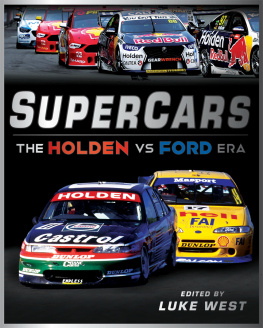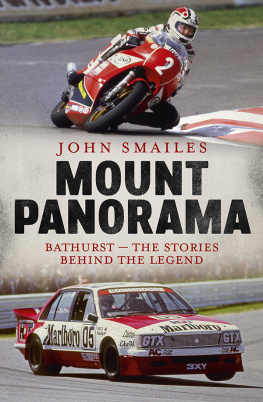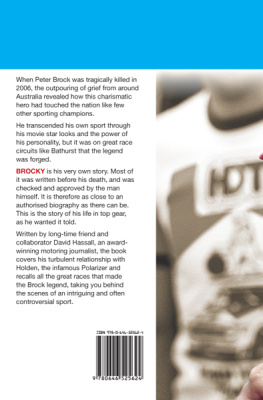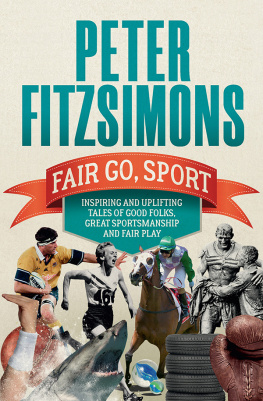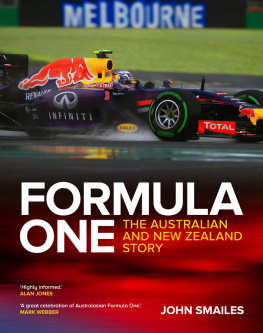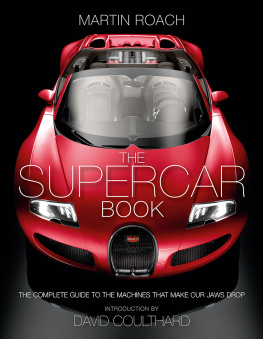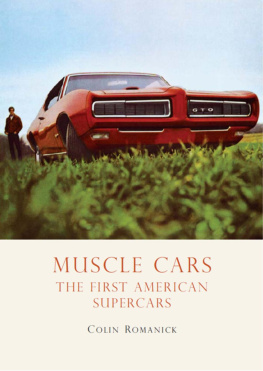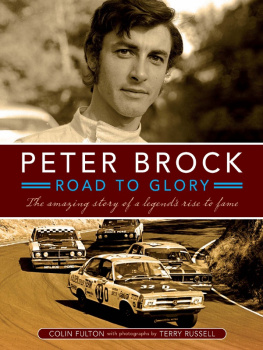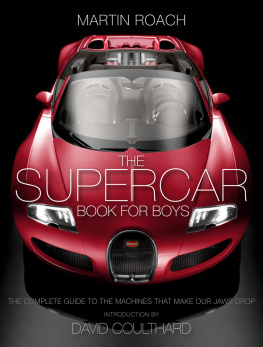Supercars has grown into a major player on the Australian sporting landscape, a far cry from its humble beginning.
Introduction
T wenty-eight seasons and counting. Thats how long Supercars has been part of the Aussie motorsporting scene. Make that the Aussie sporting scene, as the Championship now commands a position that goes way beyond what any local racing class has previously managed. Supercars is a mainstream sport these days, with several race weekends on temporary street circuits drawing crowds in the hundreds of thousands, a big dollar TV rights deal and an all-pro field of teams with several of the drivers now household names.
Of course it hasnt always enjoyed its current lofty status. Nor has it always been called Supercars. Most people know it by the V8 Supercars brand. Yet, in its first season, 1993, it was puzzlingly known by two names and derivatives thereof: Five-litre V8 Touring Cars and Group A.
Bathurst is the foundation stone upon which Supercars built its empire.
Administrative body CAMS ultimately did a good job of shaping and overseeing the rules but showed its complete lack of marketing nous in retaining the unconvincing Group A label from its predecessor. Confusing much?
Little wonder the architect of the classs incredible growth, Tony Cochrane, the entrepreneurial Gold Coaster charged with transforming the sport, immediately rebranded it to V8 Supercars. Cochrane famously joked that the Group A name sounded like a blood disorder.
Cochrane served as V8 Supercar chairman for over 15 years, overseeing its commercial success and bearing the brunt of criticism from motor racing traditionalists who lamented the sports entrepreneurial direction and his take-no-prisoners style.
There were some growing pains and many hard-won gains, but the V8s continued on an unabated upward trajectory for 20-odd years until plateauing in recent seasons.
The first quarter century or so can be broken down into several sub eras: 199396 were the pre-V8 Supercar years; 19972002 was the time of extraordinary growth; 20032012 constituted the Project Blueprint era; and 2013 onwards is the current New Generation (aka Car of the Future) period, when new marques entered, then exited, the fray.
Its been a wild and thoroughly intriguing ride throughout its history. Rarely have two seasons had much in common, besides the eventual Champion. Each of Jamie Whincups seven titles, for instance, had their own individual flavour with previously unseen dramas for him and his rivals.
And thats a key purpose of this book: to outline how each and every Championship was won. Another is to track the overall development of the Supercars class between 1993 and 2020. The 5.0-litre V8 formula has evolved over time for specific and fascinating reasons.
This is not meant to be a definitive history of V8 Supercars, more so an overview of each season and the era as a whole. It outlines the twist and turns of each Championship and the major off-track developments.
This book was born from Chevron Publishings The Official History Australian Touring Car Championship 50 years , with the fine work of racing historians and writers David Greenhalgh, Stewart Wilson, Steve Normoyle and the late Graham Howard providing the basis for the first 18 seasons covered. Their superb efforts set the tone and standard for my own contributions.
The Adelaide Parklands circuit always provided an action-packed start to the season between 1999 and 2020.
The Newcastle street circuit is the most recent addition to the Supercars calendar.
I have been a keen follower of local touring car racing since the late 1970s and recall with great fondness the excitement of the classs gestation and birth. I followed this via the specialist motorsport press and was sitting on the hill at Amaroo Park in 1993 when the category contested its first Australian Touring Car Championship race. I didnt miss a race on television through the mid to late 1990s and eventually began writing for Auto Action in 2000, then V8X magazine. A few years later it was my privilege to call the action trackside over the PA system for fellow fans, first at Bathurst, then at each round across Australia as a contractor to V8 Supercars Australia. Next was an eight-year stint as editor of Australian Muscle Car magazine, which examined the cars that won the early titles and Great Races. Now I feel incredibly fortunate to write this history so far book on behalf of Gelding Street Press for the enjoyment of fellow tragics and casual fans alike.
Luke West
Sydney, February 2021
The Championship takes in a variety of challenges for teams, none more so than Mount Panorama.
The races on the AGP support bill are now for Championship points.
The racing formula we now know as Supercars was born for the 1993 season. However, there was a long and winding road that led to that launching point.
Origins of the Supercars
E ach year the newly crowned Supercars champ receives a magnificent Championship trophy. Its a keepsake that will forever be a reminder of his special achievement; a symbol of superiority for a season of success and hard work.
Yet this shiny, handsome piece of modern sculptured metal is not the only trophy he will hold aloft after winning the title. The second is a less grandiose and far more traditional-looking cup the Australian Touring Car Championship (ATCC) trophy. Its presented by Motorsport Australia, formerly the Confederation of Australian Motor Sport (CAMS), the governing body overseeing the vast majority of car racing in this country, including elite competitions like Supercars.
The ATCC trophy is a symbol of tradition, a reminder that the origins of the Supercars series date back to 1960. This was when a chap named David McKay drove his Jaguar to victory at a circuit with the unlikely name of Gnoo Blas, at Orange in the New South Wales Central West. This was when the ATCC was held over a single race.
From 1969 it was contested over a series of races. Its an obvious statement, but so much has changed over the six decades the ATCC trophy has been presented. Much of that change is outlined in the 28 year chapters that follow, that comprise what we might call the Five-litre V8 Touring Car age what we now know as Supercars.
Before getting our teeth into those season reviews its important to briefly outline how touring car racing in this country evolved over the 33 ATCC seasons held before 1993, when cars conforming to the new V8 formula first contested that title. Not so much in terms of WHO won WHAT and WHEN, but how the rules changed over time regarding the type of cars that were raced. This provides the context for WHY the 5.0-litre formula came into being for 1993 and why it has endured for the best part of three decades. In other words, HOW we got to this point.

